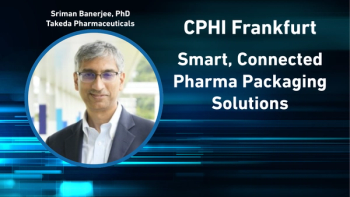
Equipment and Processing Report
- Equipment and Processing Report-03-21-2018
- Volume 11
- Issue 3
Considering Advanced Process Control for Solid-Dosage Manufacturing
Process analytical technology and advanced process control strategies can be applied to either batch or continuous manufacturing of solid-dosage drugs.
Forward-thinking oral solid-dosage (OSD) drug manufacturers are working toward advanced process control (APC), which uses in-line measurements of process and end-product parameters as feedback to enable closed-loop control of either batch or continuous manufacturing processes. This control improves end-product quality and process reliability, robustness, and productivity. APC is in contrast to traditional control strategies, which do not have direct control of product properties but instead aim to keep process inputs at a setpoint (1). In APC, process variables are adjusted to keep the product within specification and reduce variability, taking into account any uncontrolled fluctuations in the input variables (e.g., from raw materials or equipment). Model-predictive control (MPC) is an APC technique that uses a model to predict how disturbances to input variables will affect the output.
PAT and modeling
Process analytical technology (PAT) is a crucial piece of the control system. Analytical data can come from instruments such as near infrared spectroscopy (NIR) as well as from soft sensors, which correlate properties based on measured process variables, such as feedrates or temperature (2). There is an ongoing debate over whether soft sensors or spectroscopic data are more reliable for determining product quality, and in many cases, both are being used in parallel. The current best practice, discussed in presentations at the International Foundation for Process Analytical Chemistry’s (IFPAC’s) 2018 annual meeting in February, is to use redundant measurements and assume that product quality is in specification only when measurements agree.
Although both spectroscopy and soft sensors use models to correlate measurements to product properties, spectroscopic PAT models are more complex and require more maintenance (i.e., to check that the model continues to be accurate over time). NIR models, for example, are built for specific throughput ranges and specific raw materials, and a significant change might make a model invalid (2). One of the challenges for the industry, noted experts at IFPAC, is to validate and maintain models throughout the product lifecycle.
Continuous process control
APC is important for OSD continuous manufacturing because the unit operations are integrated, and a change in one will directly affect the others. Residence-time distribution (RTD) and flow-sheet models are tools for understanding how the material moves through the integrated system. They can be used to help determine when a disturbance in an input will be felt in the next operation, so that the process can be brought back into control and out-of-specification product can be diverted.
These tools are being used for continuous manufacturing processes, noted presenters at IFPAC. Additional tools are also being developed. For example, researchers at the Center for Structured Organic Particulate Systems at Rutgers University have developed a software prototype for tracing materials and keeping track of which lots of raw materials are used in different product lots (3).
The control of raw material feedstreams (e.g., excipient, API, lubricant) is more important for a continuous process than for a batch process. Modern, loss-in-weight (i.e., gravimetric) feeders, however, which have been used for many years in other process industries as well as in pharmaceutical manufacturing, can accurately dose at even parts-per-million levels and can be integrated into APC. Although feeder data have been shown as reliable, whether a drug product could be released solely on feeder data for blend content uniformity is still an issue being researched and debated by industry and regulators.
Batch process control
APC can benefit batch processes too (1). Innopharma Labs, for example, recently launched a PAT and software control system for batch manufacturing of OSD drugs. The Smart FB suite of technologies is being tested at the company’s R&D facility in Dublin. Although continuous manufacturing may represent the future, it makes sense to retrofit existing batch processes using smart, automated control systems now, says Ian Jones, CEO Innopharma Labs (4).
More information at INTERPHEX 2018
These topics will be discussed further in an
References
1. J. Huang and D. Lauri Pla, “GMP Implementation of Advanced Process Control in Tablet Manufacturing,” (Mar. 16, 2017)
2. J. Markarian, “Using Spectroscopic and Virtual Sensor PAT in Continuous Solid-Dosage Manufacturing,” (Feb. 14, 2017)
3. M. Billups and R. Singh,
4. A. Shanley,
Articles in this issue
over 7 years ago
USP Cancels Revisions to Packaging ChaptersNewsletter
Get the essential updates shaping the future of pharma manufacturing and compliance—subscribe today to Pharmaceutical Technology and never miss a breakthrough.





